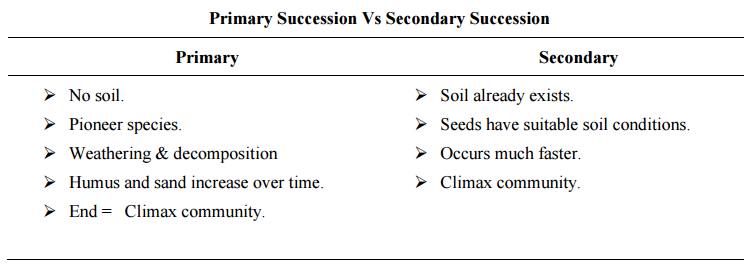Chapter: Environmental Science and Engineering
Ecological succession
ECOLOGICAL SUCCESSION
v Ecological
succession is defined as, “A change in the community in which new populations of
organisms gradually replace existing ones”.
v There are
two types of ecological succession:
1) Primary Succession
v Occurs
where there is no soil, e.g. after a volcanic eruption or a glacial retreat.
v “Pioneer
organisms”
v Simple
plants first – no or shallow roots.
v Gradual
influx of more complicated and larger plants as the habitat changes
v Unfavorable
for life at first.
v Ends with
a “climax community” – ecosystem stays constant, provided there are no changes
in abiotic influences.
2) Secondary Succession
v Community
development in the areas that were previously occupied by a other community.
v Occurs
after a disturbance. E.g., loss of trees after disease, Fire or wind,
deforestation etc.
v Conditions
are favorable for as soil and nutrients are already present.
v More
rapid than primary succession.
Primary Succession Vs Secondary Succession

Ecology
Study of
the distribution and abundance of organisms, the flows of energy and materials
between abiotic and biotic components of ecosystems.
Ecosystem
The
living things in a given area, non-living chemical and physical factors of
their environment, linked together through nutrient cycle and energy flow.
Related Topics